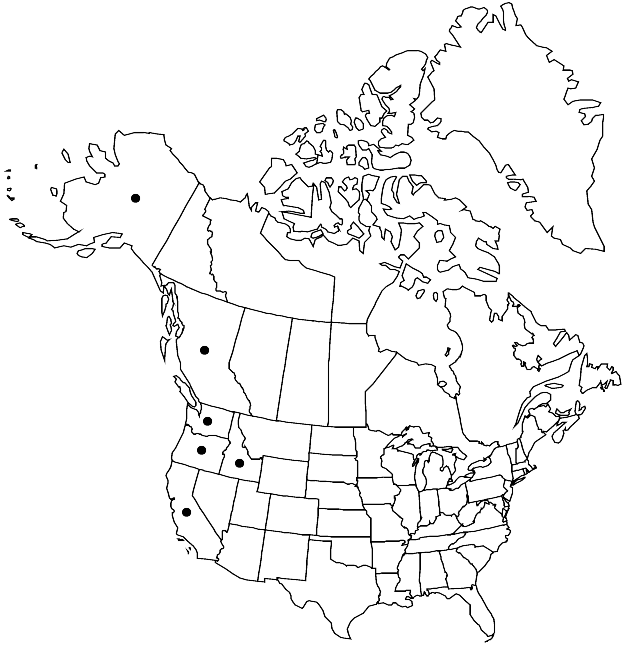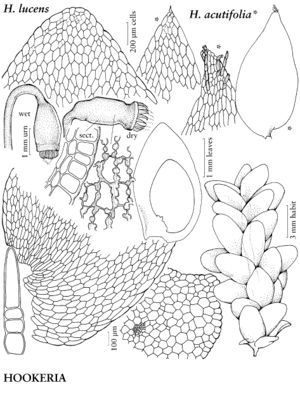Hookeria lucens
Trans. Linn. Soc. London 9: 275. 1808.
Leaves with obtuse apex; laminal cells with scattered pairs of smaller cells, one relatively smaller and quadrate, resembling rhizoid initials at apex; marginal cells width equal to medial cells. Capsule strongly contracted below mouth when dry.
Phenology: Capsules mature late fall–spring.
Habitat: Coastal islands and adjacent mainland, ravines, pools near rivers, swampy lake margins, raised bogs in peaty muck, wet evergreen woods of Alnus, Chamaecyparis, Tsuga, forests of Sequoia sempervirens, coastal Sitka spruce forests, old logs in heathlands
Elevation: low to moderate elevations (0-500 m)
Distribution

B.C., Alaska, Calif., Idaho, Oreg., Wash., Europe, w Asia, Atlantic Islands.
Discussion
A. J. E. Smith (2004) reported that in England the capsules of Hookeria lucens mature in late fall to spring; A. J. Grout (1934b) reported that sporulation occurred fall to early winter. Also, in England, 1-seriate chlorophyllous caducous filaments are occasionally produced from small cells in the distal portion of the leaf (Smith), but such were not seen in specimens examined for the flora.
Selected References
None.
